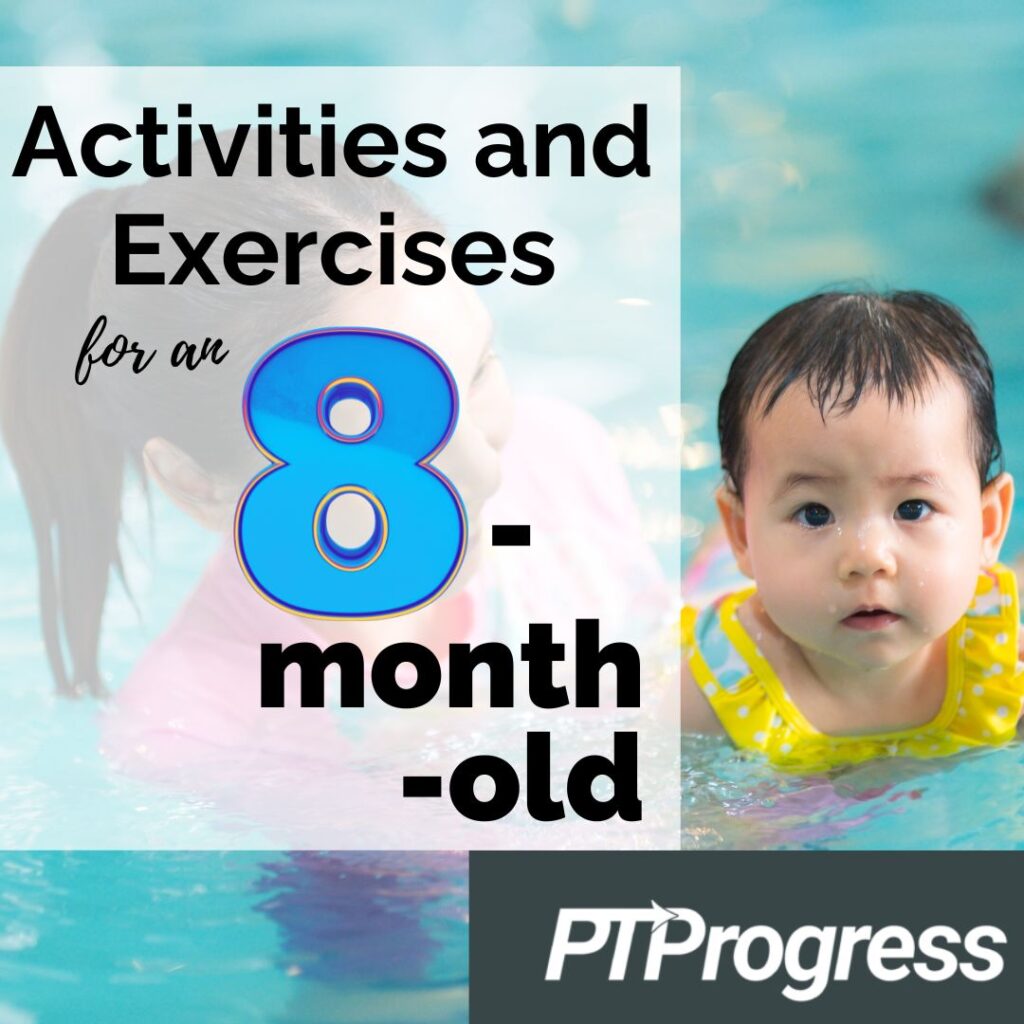
As your eight-month-old baby grows, develops, and meets new milestones, they’ll need new exercises and activities to keep them entertained. Many of the activities already discussed in the previous 7-month guide may still be relevant for your baby. But the following ideas for 8-month-old exercises and activities will provide them even more opportunities to play and explore!
8-Month-Old Exercises and Activities
Unsupported Sitting
For your 8-month-old, sitting is probably the position they play in most often. They can use nearly any of their toys from a seated position, so the fun is endless! Playing seated games, like the one below, can help them sustain this position longer and build their core strength.
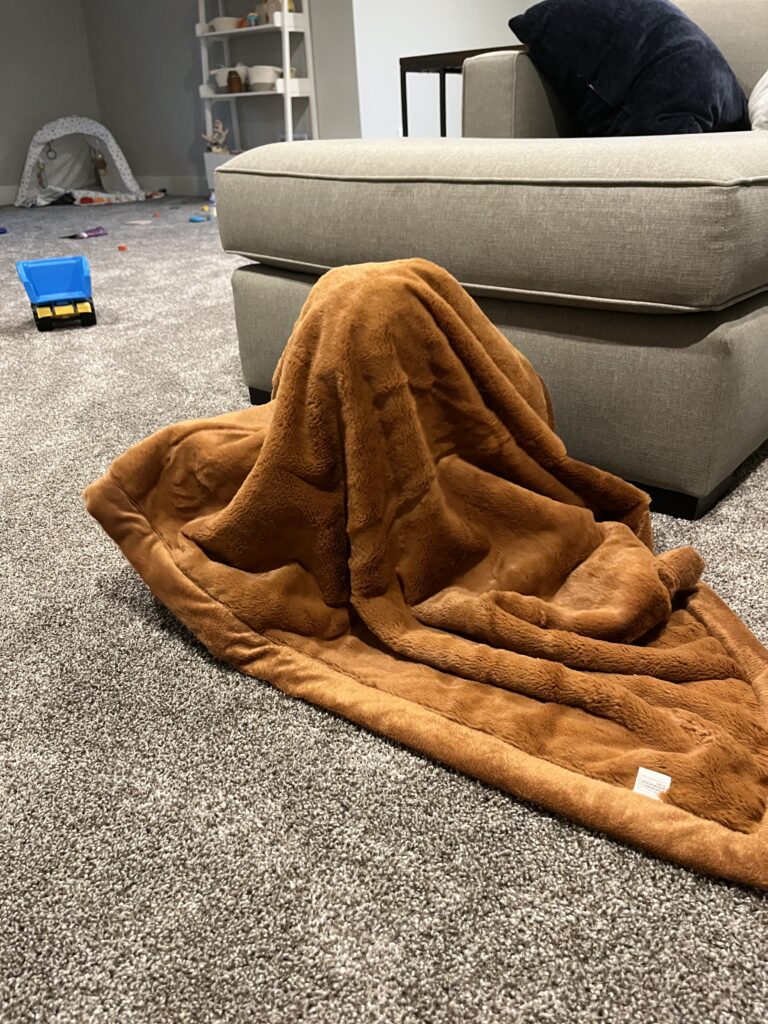
Hide and Seek with Jack
Play peek-a-boo or hide-and-seek using a light blanket. When I play with baby Jack, I throw the blanket over his head and say, “Where’s Jack?” In response, he tries to pull the blanket off, and when he does, I say “Peek-a-boo!” or “There you are!” This always makes Jack laugh and keeps him entertained for a while.
To switch it up, try putting the blanket over your own head, then have your baby pull it off you!
Crawling
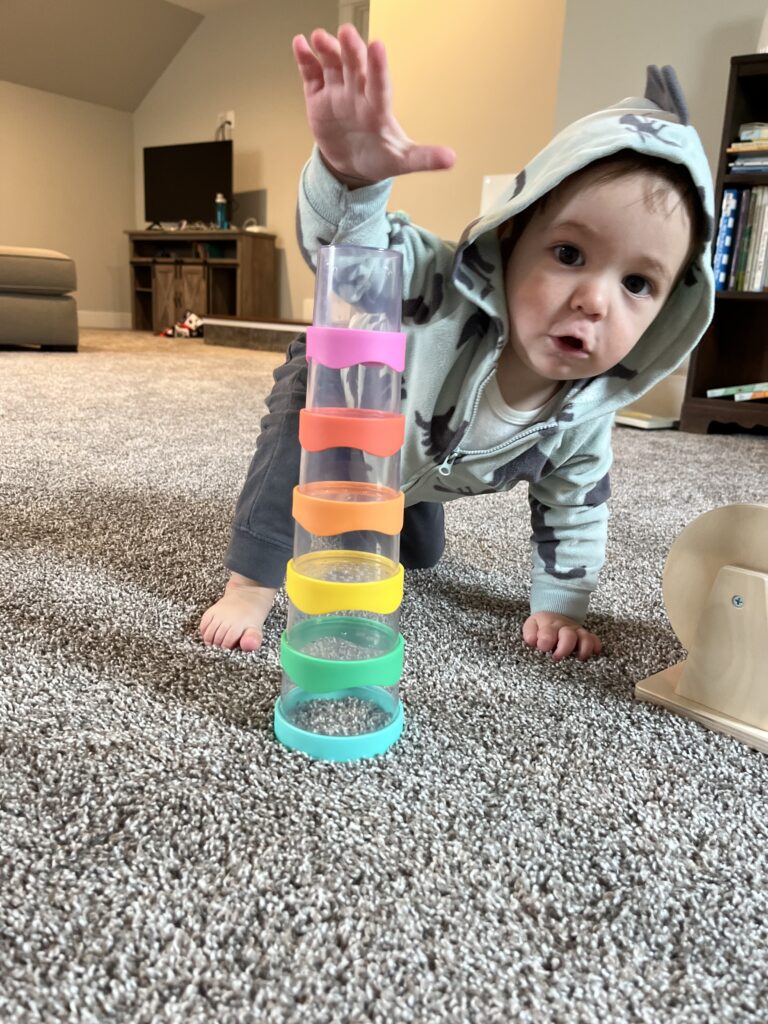
Your 8-month-old baby is probably crawling, but even if they aren’t, below are some playtime ideas to encourage it:
- Build a tower of blocks, cups, or other toys—something for your baby to knock over. Towers are irresistible to little Jack! When he is playing elsewhere in the room, all I have to do is build a tower, and he will come crawling at top speed to knock it over! Besides giving your baby a reason to crawl to you, this game will target their strength and balance, because in order to knock over the tower, they must lift one arm off the ground.
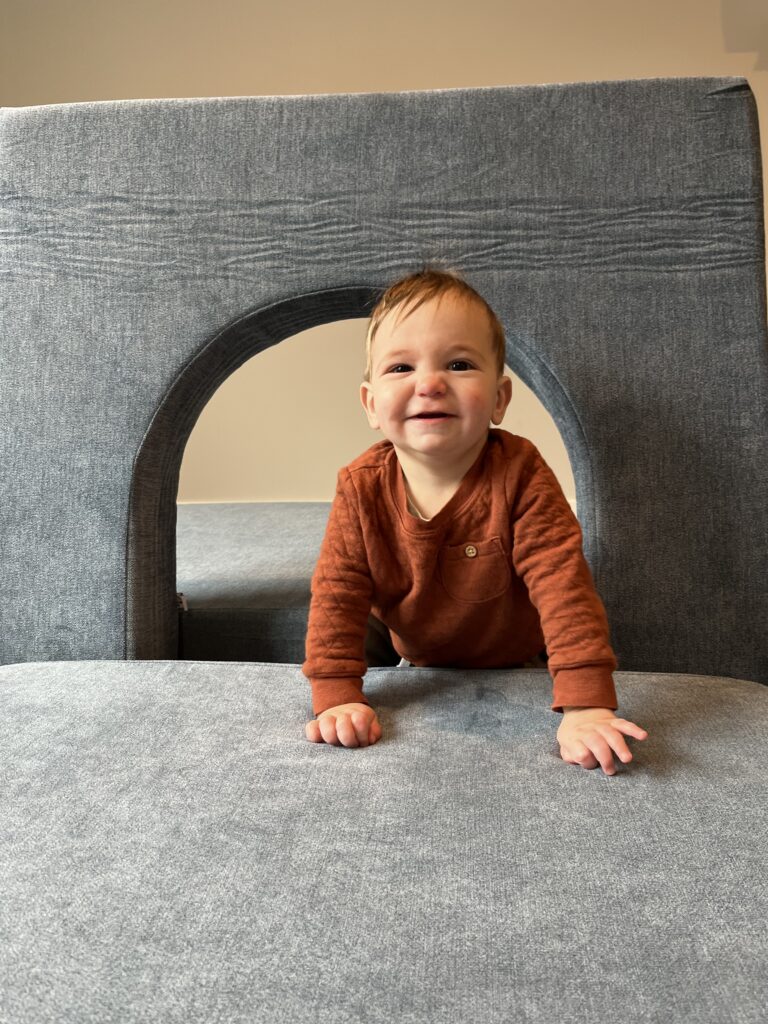
- Play couches are supremely popular right now, for a good number of reasons. The cushions come apart and can accommodate different configurations, which keeps playtime fun and inventive. Make a ramp for your baby to climb over, build their first fort, or create a typical couch for your baby to sit on. The couch cushions will provide a soft landing, but they will also challenge your baby’s balance and help them strengthen their core muscles. It takes more work to move across a squishy surface than a firm one!
If you’re in the market for a play couch, Kozy Couch is the brand Jack uses and loves. But there are many other brands to choose from as well, depending on your budget.
Check out the 7-month guide for more crawling play ideas!
High Kneeling
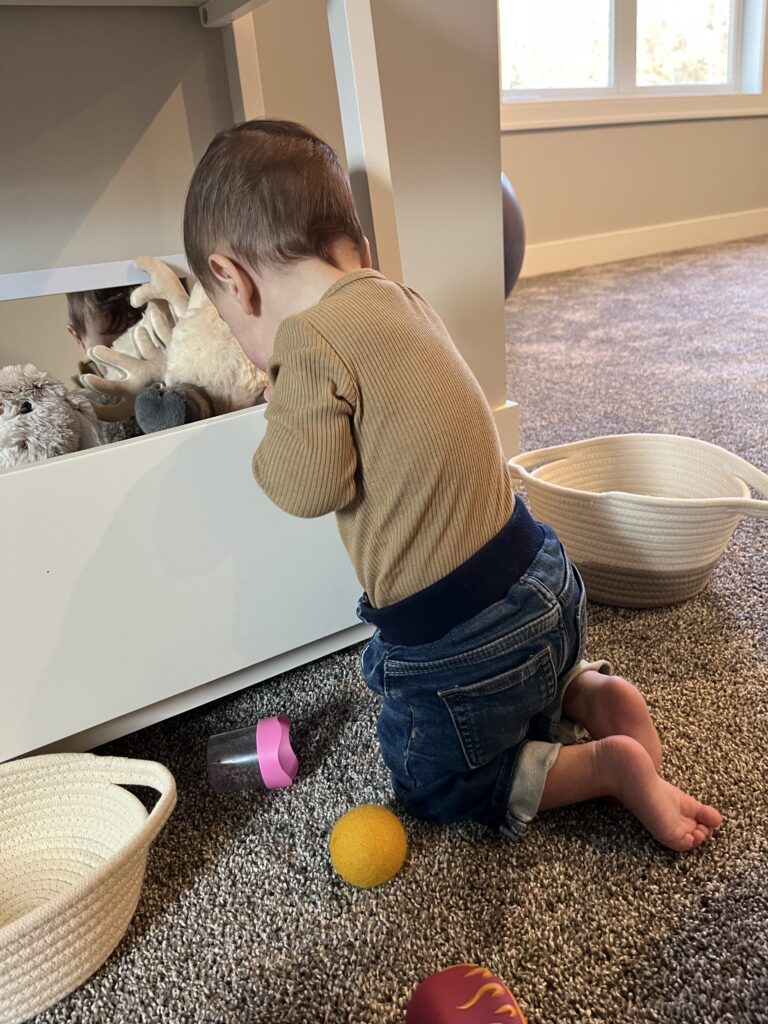
High-kneeling is a great play position for this age, requiring core strength and good balance. It also serves as a precursor to half-kneeling, an important milestone on the way to standing and walking. Below is one way to encourage high-kneeling:
- Place some toys atop a cushion or box, at a height that would require a high-kneeling position to play with them. You can sit opposite your baby to interact with them and encourage more playing at this height. Try placing the toys on top of a play couch, discussed above, or other cushions or pillows. A box or toy chest might even be the perfect height! Jack loves rummaging around in his toy box and often uses a high kneeling position to do so.
Grasping
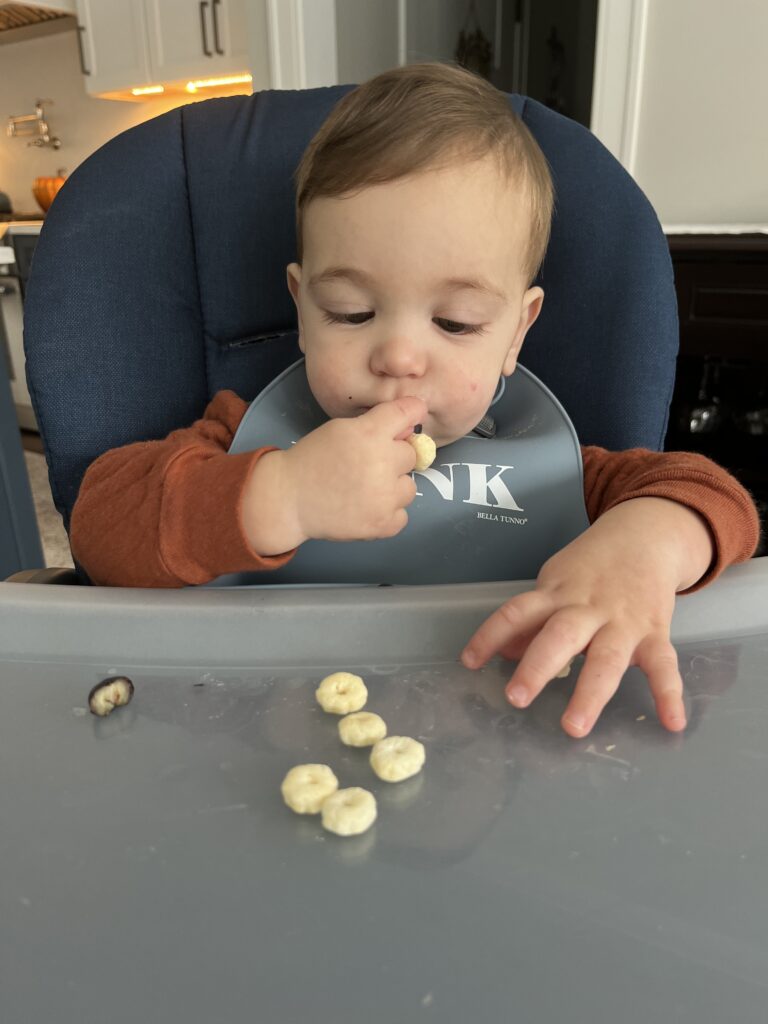
At this point, your baby is naturally working on their grasp throughout the day, so there’s not much more you need to do to encourage this skill. From holding a bottle, to grabbing toys of all shapes and sizes, to picking up small foods requiring a pincer grasp—your baby is constantly building their grasping abilities. Pictured here is Jack enjoying some blueberries and puffs for lunch!
Sensory Play
Sensory play is any activity that helps your baby explore the 5 main senses of auditory, tactile, visual, taste, and olfactory. Below are a few sensory play ideas:
- As mentioned in previous guides, water play features the tactile and auditory sensations of splashing. Depending on the weather, a shallow pool may provide ample opportunity for water play, but you can also use bathtime as playtime! You may even consider signing up your baby for swim lessons. Check out your local swim schools or YMCA for their class offerings! *With all water play, be sure to supervise your baby at all times.*
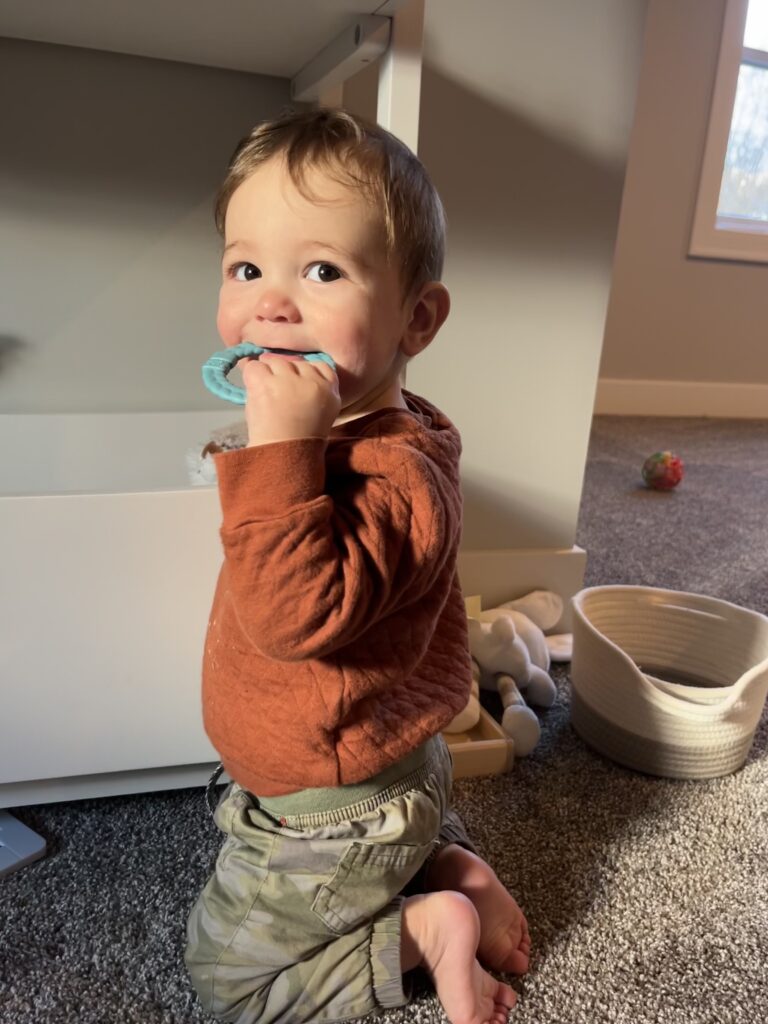
- Odds are, your baby loves to make noise by banging toys together, slapping the floor or steps, and scratching their fingers on hard surfaces. They are simply enjoying the different interactions of sound and touch! These pop tubes, mentioned in last month’s guide, are big noise makers that can provide even more sensory fun. They also help challenge your baby’s bilateral coordination skills, since two hands are required to pull the tubes apart.
- Toys with different textures can help your baby further explore their tactile sense. For example, this sensory pull toy features a variety of textures, ropes, and shapes. Playing with a toy like this one will help your baby hone their fine motor skills, such as pinching and grasping, as well as improve bilateral coordination!
- Look for textured books that will engage your baby’s attention. This cute book series, beginning with Never Touch a Dinosaur, provides tactile exploration through short-and-sweet stories.
- For exploring the auditory sense, there are fewer activities better than playing music or singing to your baby. Patty-cake and other interactive songs will keep your baby engaged and enlist the participation of their motor skills!
Supervised Eating
Keep giving your baby new foods to try, as well as any they seemed to dislike the first time around. Pouches are a great vehicle for new foods; they are easy for your baby to hold and can allow for more independence when feeding. You can buy premade pouches or, if you’re feeling ambitious, try making your own with this machine.
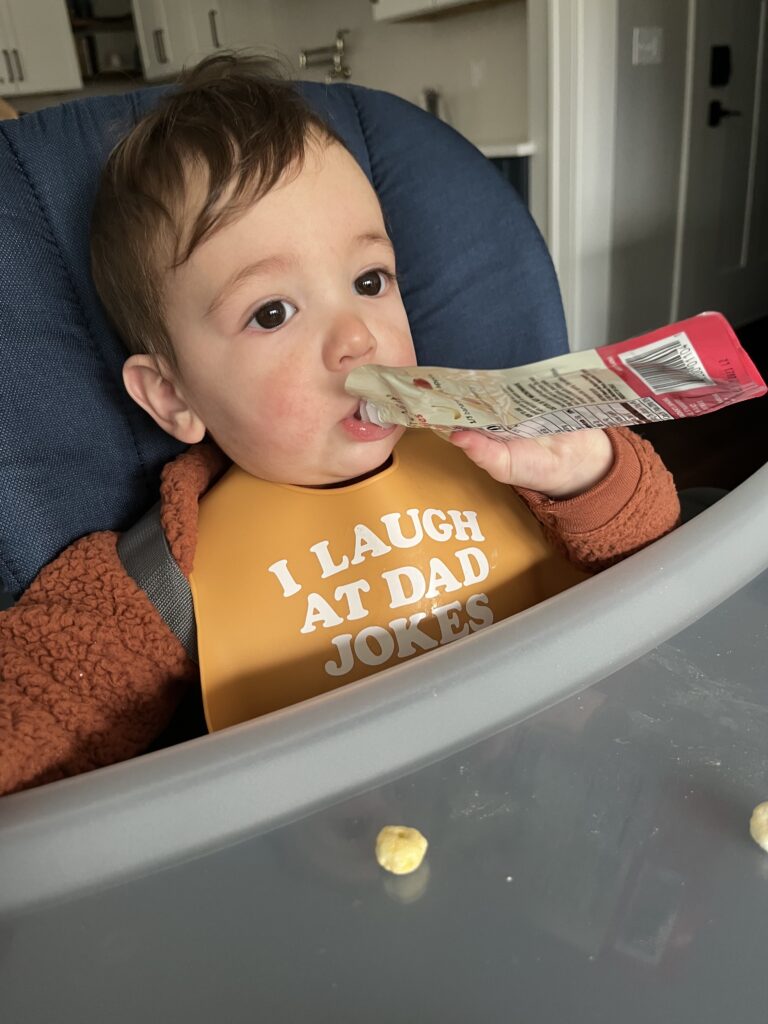
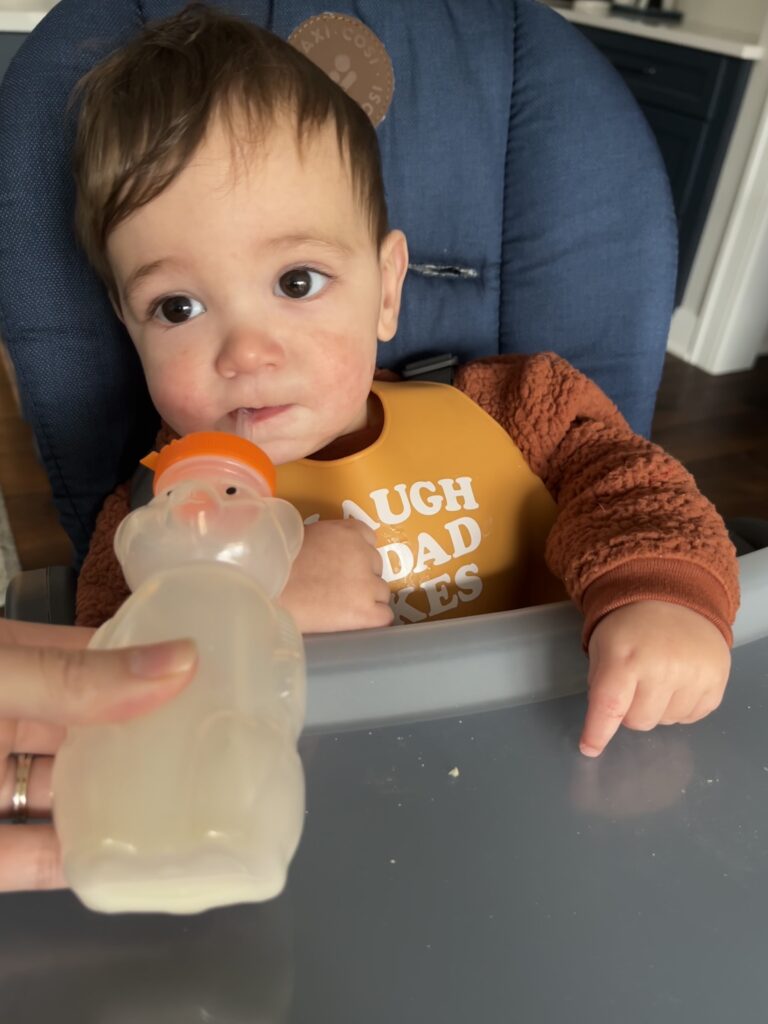
If you haven’t yet started teaching your baby to use a straw, now is a good time to start! This honey bear cup is like a squeeze bottle with a straw; the liquid moves up the straw and into your baby’s mouth when you squeeze it. Eventually, your baby will figure out that sucking the straw brings the liquid to their mouth. For an added bonus, this cup is leak proof—the perfect tool for learning a new drinking skill.
In general, babies don’t start drinking water until age 1, with formula or breastmilk the liquid of choice. But check with your doctor; they may give the okay for water sooner.
As mentioned in the previous guides, at this age your baby may be starting to teethe, which can be painful. But frozen foods can help ease teething pain. Try giving them a frozen breastmilk popsicle, some frozen fruit in a fresh food feeder, or a cold water teether.
Reading Books
Continue reading with your baby to help them develop language skills. Point at each picture and name some items it features (e.g., hat, baby, animals, etc.). Try to stick to a few key words so they don’t get overwhelmed. Pointing out those same items as they appear around the room can help your baby make connections between real life and what they’re reading.
The books at Lovevery feature only a few words per page yet depict different emotions, body parts, and some sign language for everyday words, including “more,” “eat,” and “milk.”
Standing and Dancing
Don’t get tired of dancing with your baby. These two activities will continue to play a role in your child’s development, for years to come! By standing and dancing, your child can build strength and improve their motor control and body awareness, as well as many other skills.
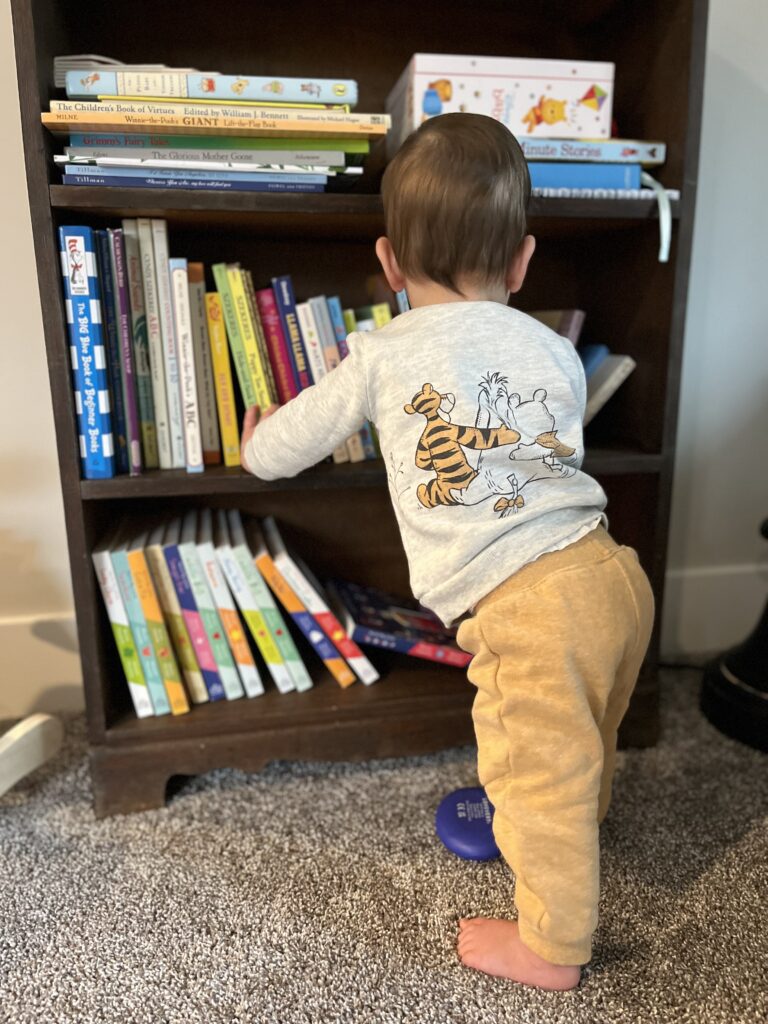
At 8 months old, your little one may be “pulling” to stand—pulling themselves up along a couch in order to straighten and stand. You can encourage this by placing toys on the couch for them to reach once standing.
If you have a bookcase, your baby might also enjoy standing at it and pulling all the books off the shelves. This is a fun activity to encourage their standing, but watch that they don’t throw a book on their little toes! Overall, be mindful of your baby’s surroundings; even if they can stand, they are likely not steady on their feet quite yet. Always stay close by and steer them clear of sharp edges such as the corners of coffee tables and chairs.
8-month-old Activities and Exercises: Conclusion
Your 8-month-old baby is an active explorer all on their own, but the above activities will help them hone on specific skills they need to master at this age. If you feel they aren’t ready for any particular activity just yet, check out the previous months’ activity and exercise guides, found right here on the blog!

